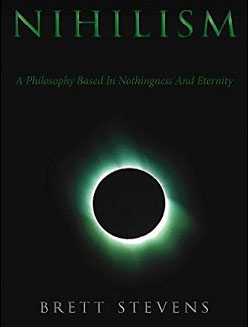Age of Functionalism
Watching the usual gibbering about political theory slide past our screens is disspiriting because to live in a dying society is bad enough, but to live in one where everyone has gone insane and will not even look at this issues deprives us of any thought that it might ever get better.
However, things are getting better. The illusions that we lived by a generation ago have already fallen apart. Our media, academics, and politicians are slowly catching up to this. They have not yet recognized what it means that people are not breeding, institutions and not functioning, and debt is rising.
Like the Jacobins or Soviets, the idealists have crashed another society. In their quest for equality, they drained all quality, and we are left with the result, which looks suspiciously like every other third-world country.
The herd did not mind this at first because the rules going away meant that we could all do whatever we wanted and stop thinking about how others might see it or history might judge it. This started during the Clinton years when they threw out all goals except diversity, democracy, and a social welfare net.
That was the peak of the Age of Symbolism, in which visual images that represented more complex realities were the most important property because they controlled the opinions of the masses. Reality did not matter; what was easiest to comprehend for individuals won the day!
However, symbol-coordinated mob rule turned out badly, perhaps even worse than Communism. The West is in debt and depends on those who want to destroy it for its food and technology. Its people have stopped breeding. Depression and insanity have become normal. And now, rule of law is dead.
The death of rule of law came about through the Ferguson Effect, also called two-tiered justice, and the predominance of Leftists in the judiciary, from which they have been “legislating from the bench” by editing law and imposing demands without being elected.
Similarly, in the administrative state, agencies created by Congress to avoid the accountability of direct oversight by Congress have spun off and written millions of pages of rules, each of which passes on cost to private industry to hire its own lawyers to interpret the mess in order to avoid fines and lawsuits.
At this point, the bureaucrats write reams of laws while disorder rules the streets and ordinary people, just like in the third world, retreat to gated communities with private security, schools, healthcare, and legal systems (HOAs).
However, in terms of the Age of Symbolism, they are doing the right thing. Symbols and images make the herd happy, therefore once the herd is agreed on those, anything else must be rationalized as being a form of the symbol.
In law, this pans out through deference to precedent. Once you pass a civil rights law or approve a treaty, all other laws must get in line with that, and it will be forced on any remaining laws by the courts. In the same way, the political system will design itself to be compatible with the new regime.
The voters have one consistent refrain: it’s not my fault, I never voted for that. They ignore the fact that they have a duty to vote for candidates who will repeal popular but destructive legislation. They also ignore the grim fact that oftentimes free stuff comes with a hidden cost years or decades later.
At this point, Late Stage Democracy has straightjacketed itself with two centuries of often incompatible rules, laws, and treaties which prevent it from acting on its worst problems. Since the first rule of being on a committee or a politician is to protect yourself by avoiding real issues, democracy avoids them if it can.
With this, the Age of Symbolism comes to an end. The new vision will be “value for money,” or rewarding those who contribute and giving nothing to anyone who does not. The Age of Functionalism dawns with a consequentialist ethics, or measuring acts by their results in reality instead of opinions about them.
Democracy was ruled by symbolism because symbols ruled the population. If the responsible authorities said one thing was good and the other was bad, the herd rushed to the good side and fled the bad. That property of power became abused and now people are looking to believe only what they can verify themselves.
This means that programs which are symbolically powerful like welfare and diversity have lost a great amount of cachet.
If you line people up and ask what they need, you will get as many answers as people. Voters tend to see government like God as a service that meets their individual needs, but government properly wielded builds institutions that benefit everyone “well enough” without favoring any specific group.
Of course, with diversity that goes out the window because each group acts in its own interests, which include seizing power from itself and wealth from other groups. “Tax the rich” means “tax the Whites” if you read it cynically enough and this is closer to accurate than the media portrayal.
Recognizing this, people are turning toward their tribes for support and acting toward the interests of those. They are skeptical of symbols, which are designed to lure them from obvious cause-effect reasoning such as assessing the likely impact of any program or policy on their group.
In the postwar world, symbols were enough because the world had gone temporarily insane with democratic feeling. However, this does not address reality, and as things get tougher, reality asserts itself again. Welcome to the Age of Functionalism.










